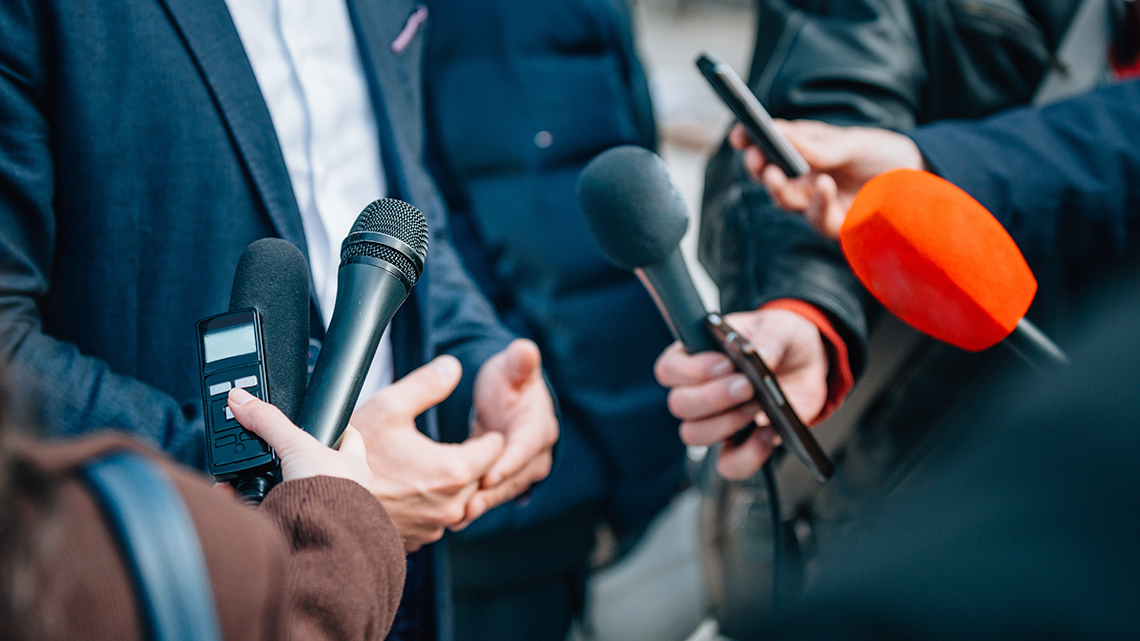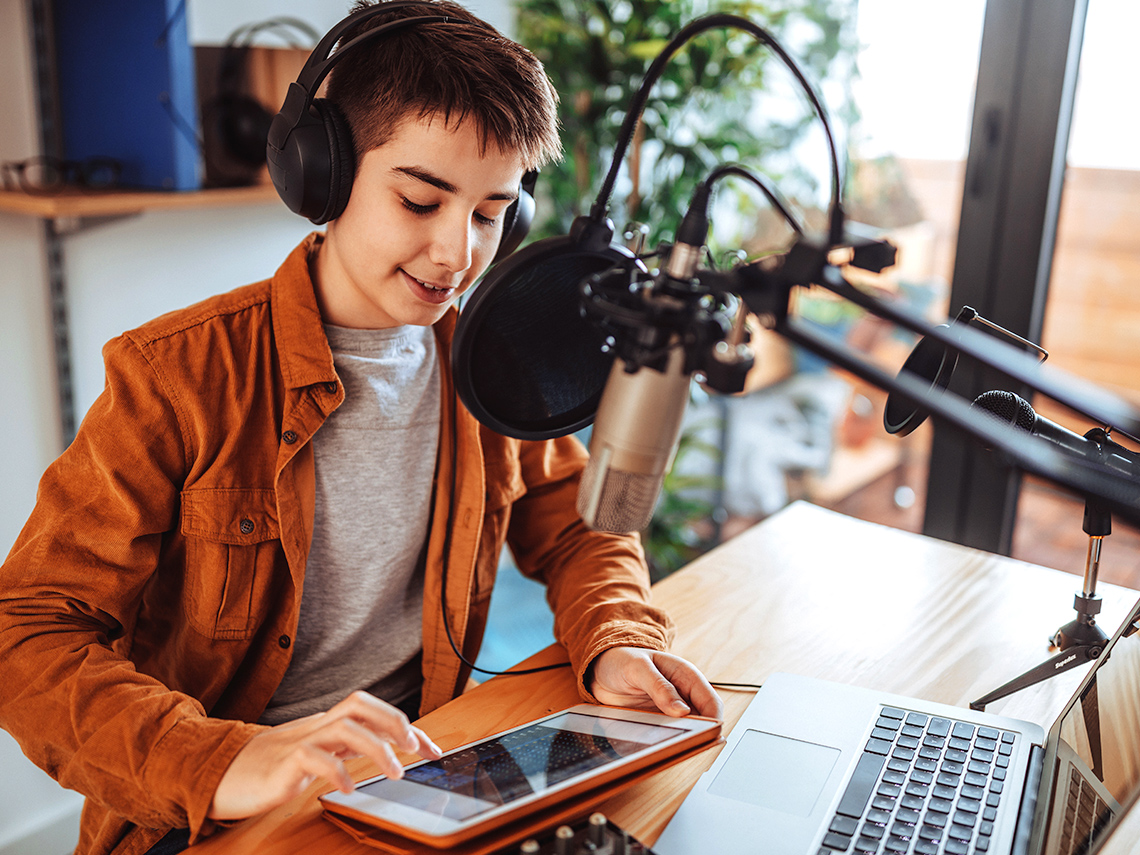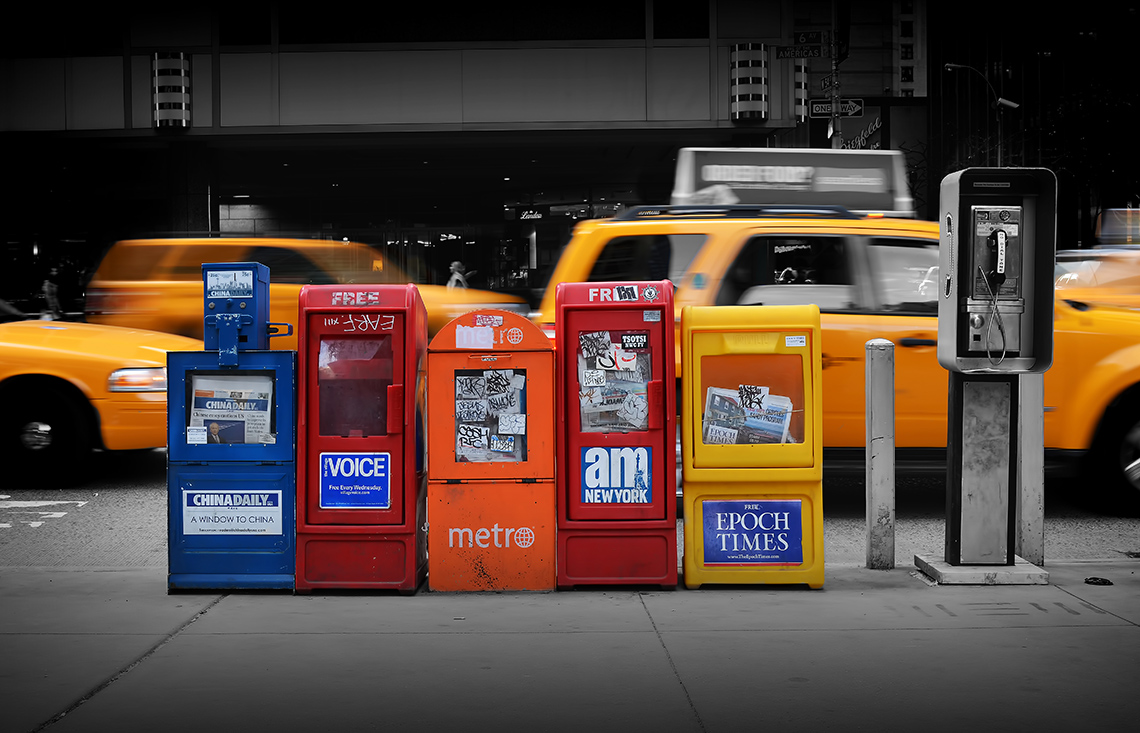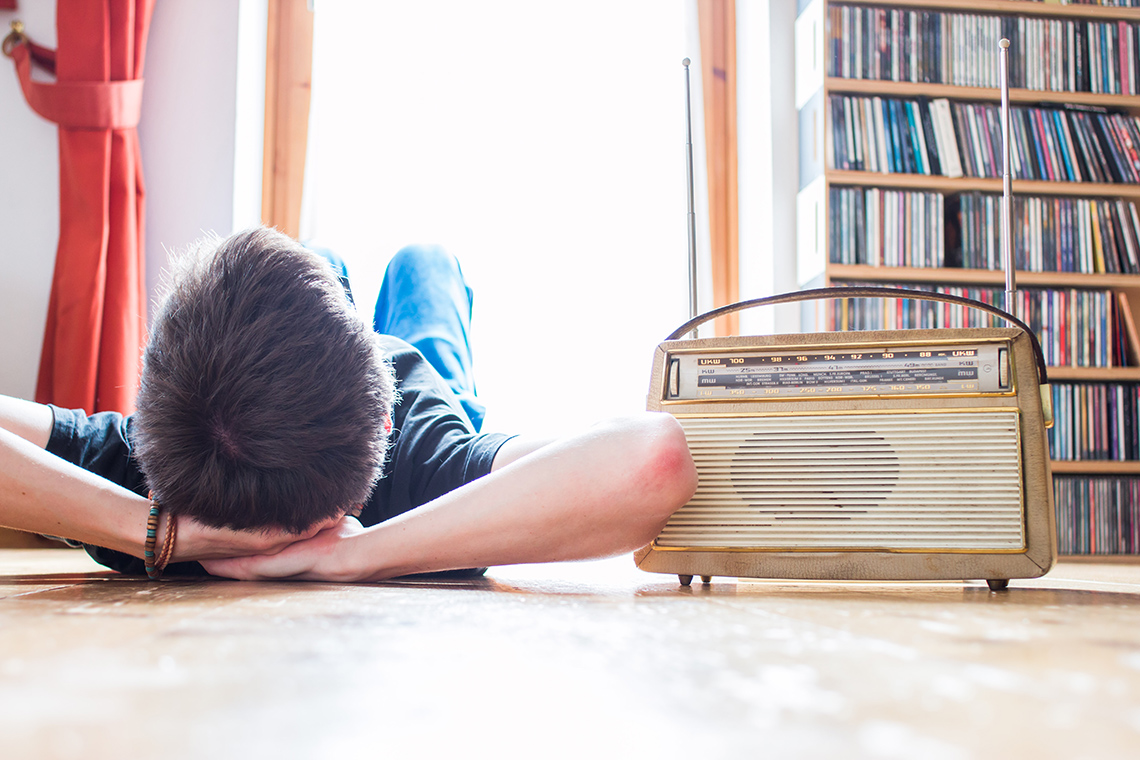Minds On
Journalist responsibilities
Brainstorm
Record your questions
In this activity, you will respond to five of the following questions. Spend about two minutes per question. Respond to the following questions using examples, dot jots, key-words, or even pictures.

Questions
- What are journalists responsible for?
- How do editors make decisions about what to put on the front page?
- Why do newspapers exist? What is their function?
- What kind of information can you find in a newspaper?
- Why are there photographs in newspapers?
- What are some similarities and differences between online and print newspapers?
Think like an editor

Select one of the following activities:
1. Describe the sound effects you would record or edit into an audio broadcast for the following scenarios. Record your answers in the Sound Effects Table in your notebook or using the following fillable and printable document.
| Event | Sounds to record |
|---|---|
| Your favourite sports team has won the championship. | |
| A record heat wave is causing the beaches to be overcrowded. | |
| The world decides to stop using all fossil fuels by 2022. |
Press the ‘Activity’ button to access the Sound Effects Table.
2. Pick two of the three following image descriptions for a publication. Which of the following would you pick if you were the editor? Explain your reasoning in one or two sentences. You may record your answers in a format of your choice.
- A person standing in front of a high bank of snow. Their glasses are fogged up and they appear stuck, unsure of how to make their way to their door due to the height of the snow.
- Two children playing on the side of a snowy hill, getting prepared to roll down the hill.
- A young person holding a snow shovel is knocking on the door of their neighbours. The guardians of the young person are watching from their window, they look at one another.
Action
The editorial process

Newspapers serve many functions or purposes:
- to inform by reporting on current events
- to educate citizens about issues that matter to them
- to entertain
- to provide a record of important events for future generations
Attracting an audience
Developing and maintaining an audience is important for online and print newspapers. Newspapers work to attract an audience by promoting subscriptions, online and hardcopy versions, and through advertising in both hard copies and on their websites.
Consider the following questions:
- How do newspapers attract readers?
- How have they changed the way news is delivered to attract more customers?
- What are some other ways people are able to learn about global events?
- How do you access news stories?
Record your ideas using a method of your choice.
Selecting a feature story
There are many considerations made when editors decide on a feature stories.
A feature story is a story along with a picture that appears on the front cover of the newspaper. A feature story is important because it helps to attract readers.
A story or a photograph may be considered to be a feature story if it is:
- Relevance: Is this story going to relate to your readers?
- Impact: Is this important to a lot of people?
- Conflict: What types of relationships are developing?
- Newness: Did this just happen?
- Unusual: Has this ever happened before? Is it strange and unusual?
Creating a headline
To help encourage people to continue reading the stories in the paper, headlines are used to attract readers’ attention to different stories.
A headline refers to a short phrase which is found at the top of an online or printed article. It summarises or draws attention to a story and encourages people to read it. In some cases, people will often read a few headlines, rather than the full articles. This will help them to get a quick sense of what's going on in the world. This is why creating a catchy and informative headline is important.

Activity
Explore the following headlines and select the one you believe will catch a reader’s attention. The content of the article will be the same, but the headline may be different in order to capture a specific reaction from the reader. Record your selection using a method of your choice and explain your thinking.
- a.) In collaboration with teachers and the community, school boards will provide more
technology in schools starting in September!
b.) More technology will be allowed in schools.
- a.) Local Firefighter volunteers every week at animal shelter for the past year receives
award.
b.) Firefighter volunteers at an animal shelter.
- a.) Teen graduates with honours.
b.) 13-year-old graduates with a university degree with top honors!
- a.) Local park cleaned by residences.
b.) Local residences collect 5 garbage bags full during a community clean up
- a.) Local teen starts candle making company.
b.) Peterborough teen creates start-up candle company sells products worldwide.
Consolidation
Investigation
How do three major newspapers across the province or country cover the same events? For this activity you will select a feature story and explore how it has been discussed in three different print or online newspapers (national or city newspapers). Once you have your data, write a summary about your findings. What was published and why?

- Were these events recorded differently by the newspapers? What might be the reason for the differences?
- Was the information presented in the same way?
- How was the information organized?
- How were headlines used by the newspapers?
To track your work, complete the Comparing Major Newspapers table in your notebook or using the following fillable and printable document. You may copy and paste the headlines and photographs of the day or include a detailed description.
| Newspaper 1 | ||
|---|---|---|
| Newspaper | Headline | Photograph or video |
| Newspaper 2 | ||
| Newspaper | Headline | Photograph or video |
| Newspaper 3: | ||
| Newspaper | Headline | Photograph or video |
Press the ‘Activity’ button to access the Comparing Major Newspapers.
Review questions
Reflect on the following questions and record your ideas using a method of your choice.
1) What is the purpose of a newspaper?
2) How might the organization of an article impact one’s understanding of an event?
Reflection
As you read the following descriptions, select the one that best describes your current understanding of the learning in this activity. Press the corresponding button once you have made your choice.
I feel...
Now, expand on your ideas by recording your thoughts using a voice recorder, speech-to-text, or writing tool.
When you review your notes on this learning activity later, reflect on whether you would select a different description based on your further review of the material in this learning activity.
Activity
Press ‘Discover More’ to extend your skills.
Discover MoreFor this activity, pick a radio station and listen to the daily news report, usually on at the hour or half hour, depending on the radio station. Alternatively, you can access the news online through a radio station’s website. As you are listening to the broadcast, record answers to the following questions. What story led the broadcast? Why was it the leading story of the day? Refer to the editorial guidelines. You will be recording your findings for five days and may do so in a format of your choice.

After your fifth reflection, summarize what you have learned about the format of this radio station’s news broadcast.
What kind of stories do they usually pick to be the leading story? What grabbed your attention? Which audiences will this type of broadcast news appeal to? How might they change their lead stories to appeal to a different audience?